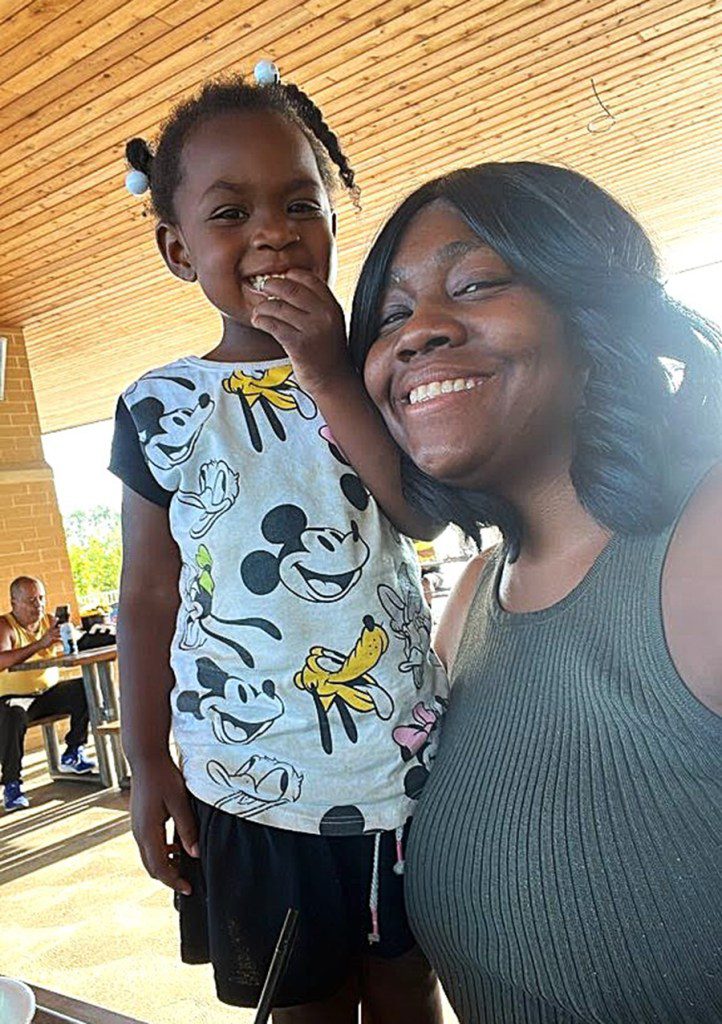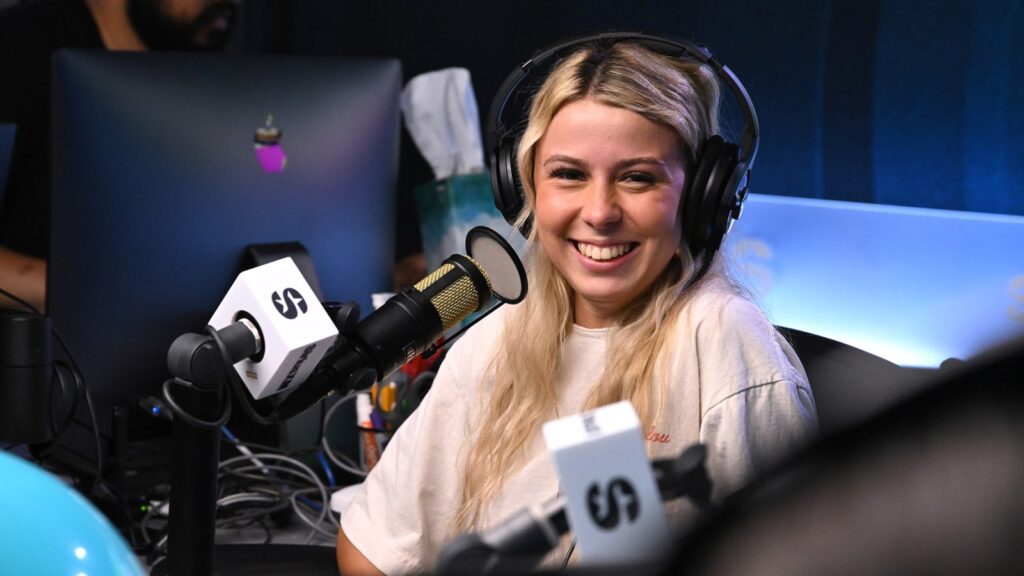These Moms Smoked Weed Legally. Then Their Kids Were Taken Away
Selah Givens is a bit of a wild child.
She’ll wake you up at 6 a.m. Chuck a sippy cup your way. Insist you play with her until, well, you play with her. Those tendencies have earned the three-year-old a nickname, says her mother, Doshia Givens: Crazy Horse.
“She knows she’s loved, she knows she’s spoiled,” Doshia tells Rolling Stone. “She’s in her villain era.”
In moments when the last thing Doshia wants to do is build another block tower or yield the computer keyboard to Selah’s furious typing, she can’t resist. “The smile on her face lights up a room,” Doshia says. It can brighten the gloomiest of days, she adds, even ones when her life as a single mom in Cleveland feels just impossible.
That’s why Doshia was devastated when Selah was taken.
Days after the horrific car accident that mangled Doshia’s bone and tore through her muscle — and days after the numerous surgeries required to hammer and nail her skeleton back in place — the crippling pain persisted. Doshia was prescribed heavy-hitting narcotics, oxycodone and Vicodin among them. But she was terrified of becoming addicted: Since 2014, Ohio has had one of the highest opiate death rates in the country; about one out of 150 Clevelanders has died of opiate-related causes during that period.
So, with her doctor’s blessing, Doshia says, she started smoking weed. She’d asked if it would impair her breastfeeding. No, she recalls him saying. A lot of patients do it, she remembers a different doctor telling her. Nothing to worry about.
Over the next couple of months, things were fairly normal. Doshia got a little better each day. Selah, who’d started daycare by then, came home early a couple of times; a little vomit and diarrhea, an occasional fever. Nothing extraordinary, Doshia says, but concerning enough to get her checked out.
So, in January of 2023, Selah’s father took her to the emergency room. Within a few hours, a blood test for tetrahydrocannabinol, or THC — a byproduct of cannabis — came back positive. Due to that result, Doshia posed an “imminent risk of serious harm to her daughter,” according to Ohio Department of Job and Family Services protocol.
Within 24 hours, Doshia and Selah were separated.
Across the country, tens of thousands of mothers like Doshia are coming under scrutiny because of marijuana use. Whether based on hearsay or urine toxicology tests often done without maternal consent, reports of marijuana use are triggering notifications to child protective services. Family investigations — and separations — follow. Black mothers have been particularly vulnerable, a year-long Rolling Stone investigation reveals.
That’s all despite conflicting evidence that THC causes adverse effects to newborns, either in utero, via breast milk, or inhaled secondhand. Despite the Food and Drug Administration’s August recommendation to the Drug Enforcement Agency that marijuana be downgraded to a Schedule III controlled substance — a category that includes Tylenol with codeine and testosterone — given its low risk of harm relative to other drugs. Despite marijuana products being at least partially decriminalized in 39 states. And despite statements from national medical organizations like the American College of Obstetricians and Gynecologists that negative consequences of marijuana exposure for children, such as poor weight gain or school performance, may be due to poverty rather than the substance itself.
Doshia Givens (right) jokes that her daughter Selah is “in her villain era.”
Courtesy of Doshia Givens
In comparison, separating children from their parents has long-term effects on nearly every aspect of their health. Rates of physical illness, like heart disease and diabetes, are higher. Rates of neurocognitive changes, like developmental delay and regression, are higher. Rates of mental illness, like depression and suicidality, are higher. Rates of truancy and incarceration are higher. Rates of underemployment, unemployment, and poverty are higher. In a 2018 interview with The Washington Post, Charles Nelson, a neuroscientist specializing in pediatrics at Harvard Medical School, called the impact of family separations on childhood development “catastrophic.”
As the percentage of children entering foster care due to substance use hits record highs, and as the country reckons with a post-Dobbs world — one in which opinions on maternal bodily autonomy and so-called fetal personhood are reshaping the rights and protections afforded to pregnant people in the U.S. — individual states are all over the map when it comes to marijuana use.
Some, like Maryland, are passing laws to prevent parental investigations premised on marijuana alone. Others, like New York, say they aren’t considering marijuana use as grounds for such investigations. But, advocates say, when combined with an empty fridge or a dirty home, it’s leading to family separations nonetheless. Still other states, like Doshia’s home state of Ohio, are pioneering laws criminalizing any and all perinatal drug use, concluding that children exposed to marijuana are necessarily being abused or neglected.
“[They] catalog you to a book,” Doshia says. “They see what they want to see, they hear what they want to hear.”
GROWING UP IN South Central Los Angeles, Raneisha Hubbert says, every day seemed like a party. Her extended family — brothers, a sister, twin aunts, a gaggle of cousins — shared a home. Barbeques all afternoon and sleepovers all night, Hubbert recalls, Luther Vandross bumping on the stereo.
“Family was everything,” she tells Rolling Stone.
Slowly, though — after the city’s Department of Children and Family Services (DCFS) started coming around — the house got quieter. First, her older brother was removed. Later, an older sister was taken, too.
Decades later, the cycle kicked off again after her three-year-old son Jayceon wandered out of their home.
It was 2016, and Hubbert had just moved to a snazzy new two-bedroom apartment in Westlake. The rental wasn’t child-proofed when they arrived: Among other things, the front door wasn’t yet furnished with an inside lock. So, as Hubbert napped following the hustle and bustle of the move, Jayceon — ever mischievous — walked out. Next thing she knew, a neighbor was shaking her awake; soon thereafter, they tracked the little explorer down.
But then, over the coming weeks — even after Hubbert installed the lock — Jayceon found his way out again. Then a third time, and a fourth. That time, it wasn’t a neighbor who came calling; it was the police. Soon, DCFS came calling, too.
One of the first items on DCFS’ checklist: a drug test. Hubbert tested positive for marijuana. Days later, Jayceon, and his older sister, Jamiesha, then five, were taken away. Hubbert says officials told her she was “unable to take care of my children, and my children needed protection from me, [because] I am a substance abuser.” (DCFS would not comment specifically on Hubbert’s case “to protect the confidentiality of children, siblings and their families as they seek to resolve sensitive matters.”)
“Pee tests aren’t parenting tests. If we’re going to have a system this punitive, it’s got to be based in science.”
Attorney Julie Gunnigle
For half a century — ever since June 17, 1971, when President Richard Nixon declared a “war on drugs” — women like Hubbert have seen their children taken away due to substance use. Part of Nixon’s war, he said in that speech, was a renewed focus on “addict identification” and the subsequent “treatment and rehabilitation of drug-addicted individuals.” That meant pathologizing drug use, Regina Davis Moss, a public health scholar and president of In Our Own Voice, a reproductive justice organization, tells Rolling Stone. These diagnoses became “a social judgment about how we live and the decisions we make,” Moss says.
Within years, mothers found themselves squarely within the crosshairs of Nixon’s war, too. In a 1986 speech, First Lady Nancy Reagan suggested that mothers who use drugs are “killing our children.” In 1990, the Department of Health and Human Services’ Office of the Inspector published a referendum on the “wide-ranging” problem of “crack babies.” The report recommended, among other things, that state and local governments make it easier to remove children from parents who used drugs. Since then, tens of thousands of families have been separated every year.
According to data from the federal Administration for Children & Families, more than 600,000 children were removed from their homes between 2015 and 2021 due to parental drug use. (The agency did not collect the data before 2015.) In 2020, the percentage of removed children on account of parental drug use hit record highs — more than doubling since 2000, to a peak of 39 percent.
“Once you put drugs in the equation, you just get a different story…you exist in a different political paradigm,” Erin Miles Cloud, senior attorney at Civil Rights Corps, a nonprofit legal firm in Washington, D.C., tells Rolling Stone. “And if you’re a prosecutor, that’s where you want people to live. You want them to live in the ‘crack mom’ paradigm — because then, you’ve made your case.”
Statistics on removals due to parental marijuana use specifically are more difficult to find. Rolling Stone contacted all 50 states for this story. Most do not track those numbers, even as they investigate and separate families for it.
Rolling Stone was able to obtain statistics from six states — and those numbers demonstrate an immense burden of investigations attributed to marijuana use: nearly 100,000 families in the past five years. In Ohio alone, more than 70,000 families were investigated for using weed. Data obtained from West Virginia, Nebraska, and Iowa revealed thousands more investigations over the same period.
Moreover, the data show, these investigations disproportionately target people of color. In Louisiana, for example, 78 percent of the parents targeted over the past five years were Black. In North Carolina, 53 percent of those investigated in the past three years were.
Investigations due to maternal marijuana use also far outnumber those sparked by maternal tobacco or alcohol use, both of which are statistically more common in white Americans — and both of which cause known harm. According to federal data, alcohol led to fewer than 11,000 child separations in 2022 compared with over 60,000 due to other substances.
“[The system says], if you’re Black or Brown, being a fit parent means not using drugs,” Miriam Mack, policy director for family defense at Bronx Defenders, a nonprofit legal firm in New York City, tells Rolling Stone.
Those kinds of drug allegations leave people like Hubbert in a tough spot. And when it comes to court hearings, she says, drug use all but seals the case.
“You can’t say anything,” Hubbert says. “[You] just have to shut up and listen.”
WHILE BOTH THE American Academy of Pediatrics (AAP) and the American Congress of Obstetricians and Gynecologists (ACOG) currently recommend against marijuana use during pregnancy and while breastfeeding, both also acknowledge what the AAP called in 2018 a “lack of definitive research” on cannabis’ effect on child development.
There’s also scarce evidence that secondhand cannabis smoke impacts child development. Recent studies have found little relationship between cannabis smoke exposure and kids’ lungs or brains. One found that cannabis exposure was actually related to better, rather than worse, reading skills. (In comparison, secondhand tobacco smoke has been associated with worse school performance.)
In August 2023, the FDA presented a 250-page report to the DEA recommending that the agency reduce enforcement of the drug given that “the vast majority of individuals who use marijuana are doing so in a manner that does not lead to dangerous outcomes to themselves or others.”
Many agencies agree that evidence on the harms of marijuana use is lacking. “The department acknowledges that more studies are needed to ascertain the long-term effects of prenatal and postpartum marijuana exposure,” an L.A. DCFS spokesperson tells Rolling Stone.
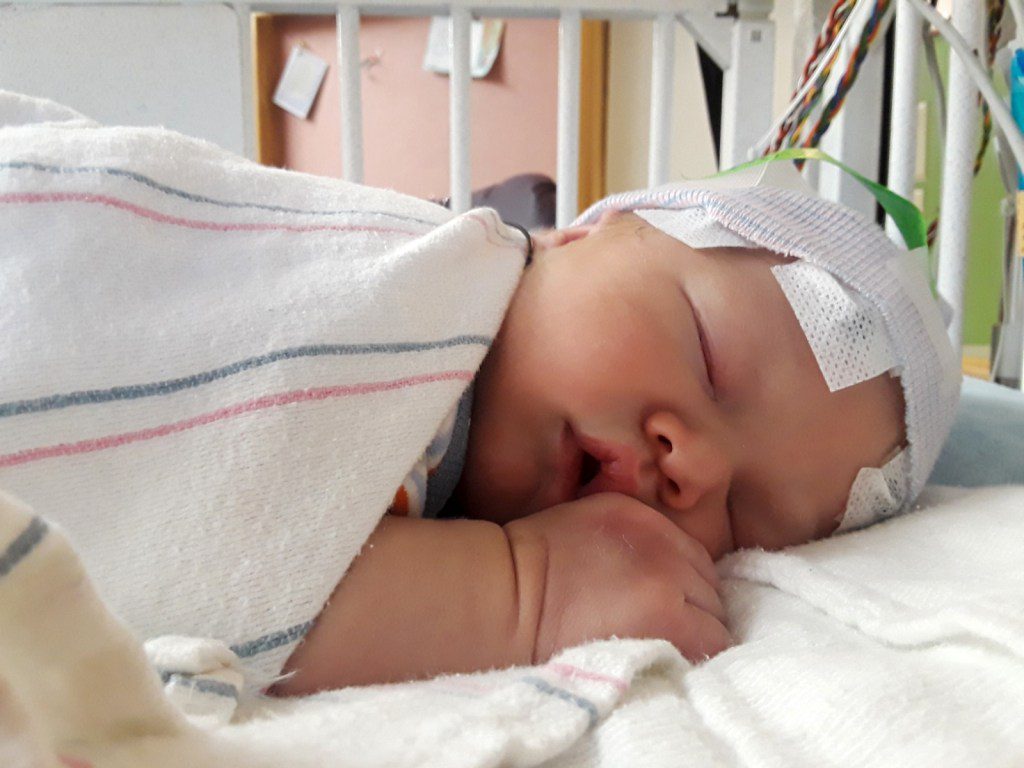
Silas Ridgell in the neonatal unit in 2019. He was given a drug test without his mother’s consent.
Courtesy of Lindsay Ridgell
Still, many states treat marijuana use alone — without evidence of past, present, or future harm on the child — as grounds for parental investigation. Take, for example, Wisconsin’s child welfare statute. In it, marijuana use can be classified as “unborn child abuse” based on “the risk of serious physical harm to the child,” Rachel Nili, a spokesperson for Wisconsin’s Department of Child and Families, tells Rolling Stone. The statute also notes “the habitual lack of self-control of the expectant mother…exhibited to a severe degree” with regard to marijuana use as grounds for investigation.
But what constitutes “severe” — in Wisconsin or anywhere else in the country — appears to depend on the individual investigator. For example, Hubbert says that despite psychiatric evaluations showing she did not meet criteria for marijuana addiction, California DCFS took her kids away and made her attend drug classes.
“I am one of thousands of parents…who are railroaded every day,” Hubbert says. “We are in an authoritarian court where there is no law.”
DCFS tells Rolling Stone that, in California, allegations of marijuana use alone “do not automatically call for children to be separated from their parents.” Whether or not the agency investigates depends on whether parents are “impaired” to the extent that they are “unable to provide appropriate care and supervision.” DCFS declined to detail their parameters for impairment or appropriate care and supervision.
To Alan Dettlaff, a former child welfare worker and previous dean of University of Houston’s Graduate College of Social Work, the absence of clear definitions around these terms is a feature of child welfare systems, rather than a bug. It’s a function of systemic bias, Dettlaff tells Rolling Stone. “[The] definitions of maltreatment are very vague,” he says. “Nothing is really codified.”
For example, in December 2020, employees of New York City’s Administration for Children’s Services said the agency “actively destabilizes Black and Brown families” in a manner they called “predatory,” according to a draft report commissioned after the killings of George Floyd and Breonna Taylor. That report was subsequently buried by the agency, Gothamist found.
“The racism is in the discretion,” Dettlaff says.
IN MANY CASES, like Lindsay Ridgell’s, parents may not even know that they or their children are being drug tested.
By the second month of her pregnancy, Ridgell was vomiting every day. She was throwing up at home and in grocery store parking lots when she couldn’t wrench their dumpsters open in time. She was in and out of the emergency room. She was prescribed one drug, and another, and another. Eventually, she was diagnosed with hyperemesis gravidarum, or severe morning sickness.
There was really only one thing that helped her: marijuana. Ridgell had previously been authorized to use medical marijuana, which has been legal in her home state of Arizona since 2010, for irritable bowel syndrome. Three months into her pregnancy, her physician renewed her card.
In Ridgell’s mind, the decision to use was life-or-death — not just for her, but for her baby, too. “[It] felt like doing what we needed to do to survive,” she tells Rolling Stone.
In May 2019, her son Silas was born. The birth was a “crazy blur,” Ridgell says: Seconds after delivery, the newborn stopped breathing. Minutes later, he was on a machine for respiratory support. Within a few hours, he was whisked away to a specialty hospital in Phoenix.
Next thing Ridgell knew, Silas had received a drug test (positive), a diagnosis (intrauterine addictive drug exposure), and a report (to the Department of Child Safety). And she’d earned an investigation for neglect.
The probe into Ridgell came despite the fact that she never actually consented to a drug test for Silas. As of July 2023, only eight states require medical providers to test pregnant women for substance use; Arizona is not one of them.
And yet, this is how a substantial number of cases come to the attention of child protection agencies. A January 2023 study found that 91 percent of mothers with positive screens were reported to agencies, versus just 17 percent of those without one. The weight of such testing is not borne evenly: An April 2023 study found that Black mothers in Pennsylvania were more likely to be drug screened, even as white mothers were more likely to test positive.
“The definitions of maltreatment are very vague. The racism is in the discretion.”
Alan Dettlaff, former dean, University of Houston Graduate College of Social Work
The American College of Obstetricians and Gynecologists, for its part, recommends against routine drug screening around the time of pregnancy, especially in cases where parents did not consent — what it calls “covert” testing. In 2001, the Supreme Court ruled that drug screening without consent was a violation of the Fourth Amendment, which protects against unreasonable search and seizure. Nonetheless, what ACOG calls “test and report” practices continue.
“If you want to shut down the pipeline, it would be really great to shut down this big inlet,” Julie Gunnigle, Ridgell’s lawyer, tells Rolling Stone.
Beyond the consent issue, authorities pursued an investigation of Ridgell despite immunity granted by Arizona’s medical marijuana law, through which citizens are “not subject to arrest, prosecution or penalty in any manner, or denial of any right or privilege” for using the substance. The law also contains anti-discrimination provisions that prohibit denial of custody, visitation, or parenting time, or “presumption of neglect or child endangerment.” There is even an exemption in Arizona’s child welfare legal code that permits substance use during pregnancy if it is “the result of a medical treatment administered…by a health professional,” as was the case with Ridgell.
Policies maintained by Arizona’s Department of Child Safety (DCS) do not appear to uniformly honor these provisions, however. Even if a parent has a medical marijuana card, they may come under investigation for “recreational” rather than “medicinal” use, Darren DaRonco, an agency spokesperson, tells Rolling Stone.
The fact that the child welfare agency exerted medical authority over a physician is not unique to Ridgell’s case, Dr. Mishka Terplan tells Rolling Stone. Terplan is a Baltimore physician double-boarded in obstetrics and addiction medicine who’s published over 190 papers, many of which focus on substance use during pregnancy. He’s also been tapped as an expert by the Centers for Disease Control and Prevention and the National Institutes of Health, and helped develop national guidelines for ACOG.
One such document is ACOG’s 2018 bulletin on hyperemesis gravidarum — the condition Ridgell suffered from during her pregnancy with Silas — that describes a condition too often “minimized” and “undertreated”; warns of potentially “significant morbidity” for mother and child; and recommends “early treatment.”
Terplan has also advised scores of mothers and attorneys in cases involving substance use. In those cases, he’s repeatedly seen agencies claim scientific expertise they don’t have — and, in his opinion, “weaponize” medical jargon. “Suddenly, the case worker becomes the medical expert,” Terplan says.
Eventually, Ridgell’s son was determined to be healthy — more than 250,000 newborns require respiratory support at birth in the U.S., studies estimate, and the majority have no long-term problems. Doctors also determined that her marijuana use had nothing to do with the slight tremors, or “jitters,” that Silas exhibited following the delivery. (Ridgell was also taking antidepressants during her pregnancy, which are known to cause jitters in newborns.)
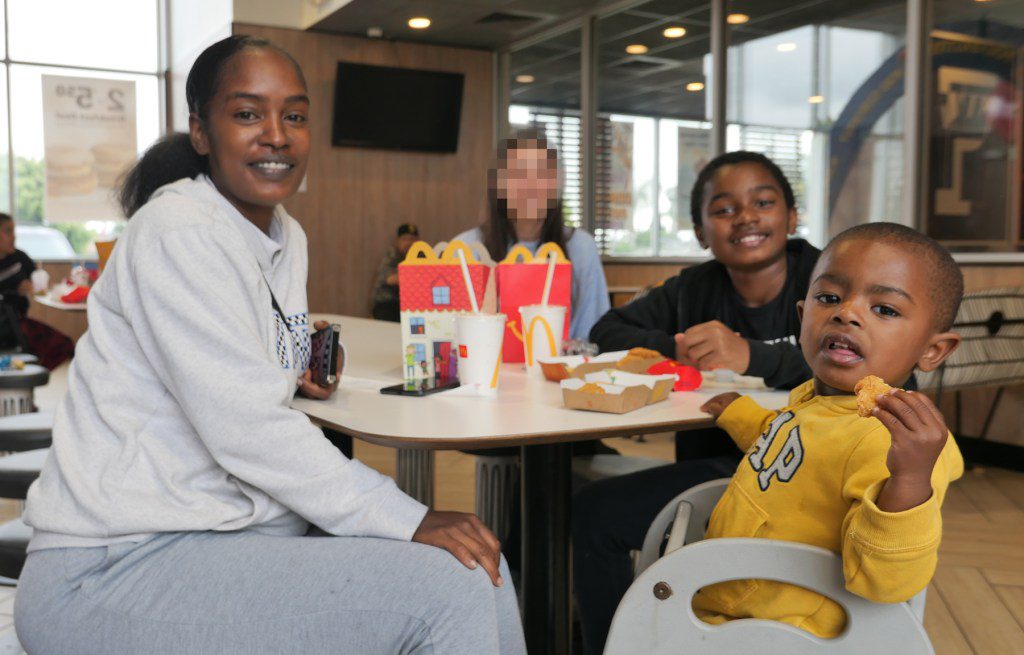
Raneisha Hubbert with her children Jayceon and Justin. A court mandated monitor is blurred for privacy.
Eli Cahan
Still, Ridgell was placed on the DCS Central Registry for neglect: something that would flag her on employment background checks and “stop me from doing anything I wanted [for] work,” she says — including, continuing in her role as a social worker for the very department that was investigating her. Ridgell could be on the DCS blacklist for up to 25 years.
“I feel like they were pulling at straws,” she says. “I’m not sure if they used any studies or [where] they got their facts from. [But] you really had to prove your innocence.”
DCS maintains that substance use alone did not lead to the decision. Rather, DaRonco says, investigations only occur when “[substance use] is causing a substantial risk to the child.”
“Substantial risk” appears to be a broad criterion, however. A DCS policy document obtained by Rolling Stone lists more than 130 situations in which children may be deemed unsafe, including when a parent makes “inadequate and/or inappropriate babysitting or child care arrangements,” or if they are “distressed, ‘at the end of their rope’ and [are] asking for some relief.”
It didn’t take Ridgell long to file an appeal — which she won. But DCS placed her on its list anyway. DaRonco did not comment on that determination, or on any other aspect of her case. “Many of these policies require updates subsequent to the Ridgell decision,” he says.
Gunnigle says that, based on the decision, it is clear that the law — and the science — didn’t matter.
“Pee tests aren’t parenting tests,” she says. “If we’re going to have a system this punitive, it’s got to be based in science.”
EVEN IN PLACES where child welfare agencies are forbidden from considering marijuana use alone as a reason for neglect — like New York — it often constitutes a gateway to surveillance, Miles Cloud, at Civil Rights Corps, says. The reported marijuana use, which won’t lead to a separation by itself, leads to an investigation. And the investigation surfaces other things that, when framed around neglect and substance use, can appear damning — a phenomenon she calls “positive-plus cases.”
“You get drug test plus messy home…[or] a dirty piece of laundry somewhere,” she says. “What they’re trying to do is connect in someone’s mind that drugs lead to these horrible behaviors…like [the parent is] so stoned out of their mind that they can’t clean their house.”
Alexander Stein, a staff attorney for the Civil Rights and Restorative Justice Project at Northeastern University in Boston and a former public defender in Chicago, has seen similar strategies used against his clients. And to Stein, these cases illustrate a broader pattern: child welfare agencies’ tendency to criminalize poverty. The legal term in Illinois, Stein tells Rolling Stone, is an “injurious environment,” defined by the state as any circumstance that “may likely cause harm to the child’s health, physical well-being or welfare…due to the parent or caregiver’s blatant disregard.”
That’s “an amorphous concept,” Stein says, “[which], for a lot of my clients, in practice…could be anything.”
Statistics from the federal Administration for Children and Families bear that out. In 2021, the most recent year for which data is available, nearly 80,000 children determined to be victims of abuse or neglect had receipt of public assistance listed as a risk factor for their welfare; about 34,000 had financial insecurity listed; and close to 28,000 had housing insecurity listed. According to a 2023 ACF study, children whose parents are struggling with poverty were seven times more likely to be deemed neglected than the general population. (Such differences “may be explained by increased surveillance of people living in poverty,” the agency adds.)
“There is no perfect parent,” Miles Cloud says. “You can always find a thing.”
Still, some states practically name poverty in their child separation policies: If “family finances are insufficient to support unusual need[s],” child separation could be justified, Arizona’s DCF policy reads. (Using data from 2022, the Federal Reserve reported that 43 percent of parents — more than 14 million families — did not have enough savings to cover a $400 emergency expense.)
“[The system] is all about pathology when really what you’re identifying are structural things. If you can’t pay rent or don’t have food on the table, that’s not an individual failing. That’s poverty.”
Miriam Mack, policy director for family defense at Bronx Defenders
Advocates like Mack at Bronx Defenders are also quick to point out that while parents suffering from poverty are more vulnerable to losing their children, they rarely receive cash benefits to support their needs. In contrast, foster families receive a stipend of around $4,500 per year from the state to support children separated from their parent, historical research shows.
The system “is all about pathology — these ‘individual failings’ — when really what you’re identifying are structural things,” Mack says. “[But] if you can’t pay rent or you don’t have food on the table, that’s not an individual failing — that’s poverty.”
THE SPECTER OF family separations due to marijuana use also creates a different issue: mothers foregoing care altogether.
In Cleveland, Doshia has heard of other parents doing just that — while they’re pregnant, or, after delivery, avoiding the emergency room for anything short of a life-threatening situation. And while she knows those women may not be making the safest decision, she also sympathizes with those who fear that visit is “going to create a bigger problem.”
In a post-Dobbs world — and in an era of so-called fetal personhood, the conservative ideology that grants legal rights to infants not yet born — that risk becomes more real every day. States like Mississippi and South Carolina are already using “chemical endangerment” laws to prosecute women criminally for prenatal drug use. In Oklahoma and Alabama, women have been charged for using cannabis — including medical marijuana.
“Any sort of outside influence…to determine whether or not I can keep my child…could be, and is, a deterrent for women who are seeking care,” Moss, at In Our Own Voice, says.
Some states are trying to mitigate threats of deterrence related to marijuana use. Last May, Maryland was among the latest states to enact a law similar to the New York one shielding parents from neglect investigations based on cannabis alone.
Other states are moving in the opposite direction.
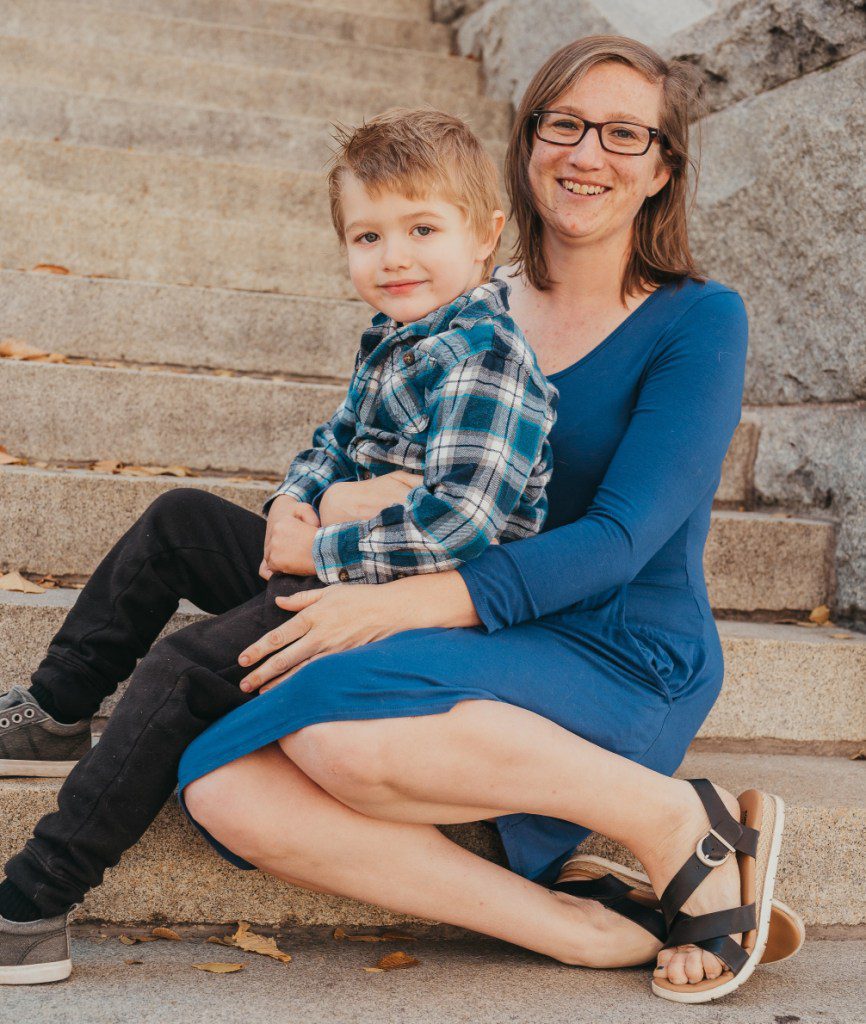
Lindsay Ridgell (right, with her son Silas today), who used cannabis to mitigate symptoms of severe morning sickness, says Arizona’s Department of Child Safety was “pulling at straws” to place her on its registry for neglect.
Courtesy of Lindsay Ridgell
In Ohio, a law has been on the books since April that could criminally prosecute pregnant women for “corrupting” their unborn children by “furnish[ing] or administer[ing] a controlled substance to a juvenile.” (The law, unfurled amid the opioid epidemic, was originally intended to prosecute drug dealers targeting youth.)
When asked about the state’s approach to child removal cases involving marijuana, LeeAnne Cornyn, director of Ohio’s department of mental health and addiction services and former chief of staff for Governor Mike DeWine, tells Rolling Stone that there is no universal approach given that enforcement varies by county.
“What we should be focusing on is…deploying our resources to conduct investigations on children that have the evidence of needing help,” Cornyn says, adding, “We may not necessarily have the culture everywhere that we want or aspire to as a state.”
According to ACOG, the threat imposed by laws like Ohio’s risks the health of both mother and child. “Drug enforcement policies that deter women from seeking prenatal care are contrary to the welfare of the mother and fetus,” the organization wrote in 2021.
In Cleveland, the welfare of mother and fetus — especially for those who are Black — is a timely issue. The city has some of the highest rates of Black maternal and fetal death in the country.
According to a recent study in the Journal of the American Medical Association, the 2019 Black maternal mortality rate in Ohio was around 60 per 100,000 — a figure two to nine times higher than any other racial group. That makes giving birth as a Black person in Ohio statistically more dangerous than in countries like Kyrgyzstan, El Salvador, and Syria.
And according to 2020 data from Ohio, Cuyahoga county — where Cleveland is located — had a Black infant mortality rate of 15 per 1,000. That figure was almost four times that of white children, indicating that being born as a Black infant in the county was more dangerous than in countries like Mongolia, Tonga, or Costa Rica.
Questioned about these statistics, Cornyn says that “we want every Ohioan to live up to their full potential.”
“It’s a work in progress,” she adds. “Clearly, we’re not all the way there yet.”
ON A THURSDAY in June 2023, Hubbert and her third child, Justin, drove to a McDonald’s in Compton. Abutting a playpen overflowing with young Angelenos, amid a cacophony of hoots and hollers, and supervised by a stranger, the two slurped milkshakes, inhaled McNuggets, and spent an hour with Jayceon.
Justin — like Jamiesha and Jayceon — had also found himself in DCFS’ crosshairs. He was always small for his age and, eventually, those plateauing growth charts led to suspicion by his doctors: Justin was diagnosed with “failure to thrive,” his mother was accused of neglect, and he was temporarily removed. Ultimately, the court found those allegations unjustified, and Justin was reunited with his mother. (Hubbert herself is significantly shorter than the average population.)
Yet, even as Hubbert was exonerated when it came to Justin, the courts did not return custody of Jayceon or Jamiesha. Her contact with them is limited to an hour or so a week in a fast-food joint. Jamiesha — who is now 16, and recently, a mother herself — of late has been refusing to see her mom altogether.
“I was traumatized, I was hurt, and I know that my children will be hurting even more,” Hubbert says, “because they’re asking the question: Why is my brother home, and we can’t come home?”
The outcomes for other parents have varied, too.
Ridgell, after a nearly three-year court battle, got Silas back and got her name taken off Arizona’s blacklist for those who abuse or neglect their children. Silas is now an affectionate and spunky five-year-old who loves dinosaurs, tells the same jokes “hundreds of times,” and who, on a whim, plants kisses on his mother’s arm.
“I know my rights,” Ridgell says, “[but] they should never have substantiated [the report of neglect] in the first place. I shouldn’t have had to appeal.”
Doshia, for her part, went to parenting classes and substance use classes for weeks after Selah was removed from her custody. She drove across town for drug tests once or twice a day, paid for gas, arrived late for work, and bore the consequences. Ohio Job and Family Services would text her on a Friday morning, she recalls, demanding a test in the next 48 hours — even as drug testing centers refused to accommodate her on the weekends. And if you miss a test, they told her, that counts as a positive.
“How do you know you’re not addicted?” a judge asked her at one point, when she questioned the necessity of the tests.
Despite her hesitations, Doshia complied. Eventually, she and Selah were reunited. And while it took her daughter months to get over separation anxiety — complete with “glass-breaking screams” that would come if her mother left even for an hour’s errand — Selah is now all but back to her normal, wild self.
Doshia wonders, though, what will happen if — when — Selah gets one too many fevers again. While she’ll most likely take her to the emergency room — nothing comes before ensuring her daughter is safe, Doshia says — she knows that decision may have consequences.
“They’re looking for the smallest things,” Doshia says, “to take your kids away.”
This reporting was supported by an Investigative Reporters and Editors Freelance Fellowship.


